Ginger Simpson's Blog, page 35
May 17, 2016
Place Setting--not just for tables, anymore
(This blog is cobbled from notes I took years ago at a writer’s conference, and I’m sorry I don’t remember and didn’t note who gave this talk.)
Setting…yeah, that place where your story/novel takes place. The millionaire’s mansion, the wide open spaces of that western novel, the cramped quarters of a compact car your heroine steals to get away from the villain…setting is just as important to your story as are the main characters. The goal of description is to create a well-designed set that provides the perfect background for your characters. Without the details of setting, you’re condemning your readers to wander around an empty stage, trying to figure out where they’re at. Too much description though, especially in large chunks, and you’re risking what I once heard described as “the tombstone effect”—large blocks of description that are just so much grey material the reader will skim (and sometimes skip) looking for action.
So, how do you reveal setting without etching it in that tombstone?
Setting is revealed through motion. Put your character into a place she isn’t familiar. Let’s pretend she’s a girl of humble origins and she’s just landed the job of a lifetime—nanny to a widowed multimillionaire’s kids. Now, have her walk through that rich dude’s home on her first day on the job. Which details would she notice immediately? The softness of the Persian rug underfoot? The paintings on the wall? How do those paintings make her feel? Can she tell the difference between a Monet or a Picasso? Does she sink into the leather couch? Can she smell the leather? Use active verbs as she makes her way through this place. Instead of explaining/telling that the chandelier glittered and danced in the light, make her blink because of the display. Instead of telling your reader that there’s a heavy, HUGE marble table in the room, make her detour around it. And, we can’t forget the kids…are they happy there is someone new there? Or, perhaps looking at her as if she’s just one in a long string of many who have come and gone. Make sure it’s your character that’s doing all the action—not the setting.
A character’s level of experience reveals setting. Different characters perceive the same surroundings in very different ways, based on each character’s familiarity/lack of such with the setting. Let’s take our girl of humble origins above and our rich widower and put them somewhere else. Let’s suppose our rich widower lives in a secluded home high on a cliff overlooking the ocean and the only way to get there is to walk across a rugged, boulder-strewn beach. She’s shivering and bundled to the teeth but the wind is still cutting through her wool wrap while the rich widower beside her is wearing only a cable-knit sweater and doesn’t seem to be affected by the damp, cutting cold in the least. She tripping and falling over half-buried pieces of driftwood in the damp sand and is utterly certain that her shoes will be completely ruined by the time they reach his home. She’s pretty sure that the wind, the dark clouds, and the waves pounding the shoreline mean a major storm is brewing. The stench of rotting seaweed and dead fish makes her nauseous. However, she sees the incredible beauty in this wind and water carved fantastic landscape, while he just sees another barrier to keep people out of his life. (Good grief, I think I just came up with a clichéd Gothic novel…) Familiarity doesn’t always imply good.
Use your character’s mood to establish setting (and to set the mood with your reader). Let’s go back to our poor heroine trudging along that beach and take out the rich widower. From her vantage point on the beach she can determine that she’s halfway between her car on the shoulder of the road and the imposing house on the cliff. As she walks along the beach, different sea birds wheel overhead. The wind off the water is invigorating, and scented with the tang of salt. The surf pounding into the massive boulders jutting into the water and along the shoreline booms as it slaps the weathered and intricately carved black rock. She laughs at herself as she trips over a partially buried large piece of driftwood. Pleasant, isn’t it? She’s on her way to a new job and this colors everything she looks at.
Now, let’s change her mood. She’s still halfway between her car and the house, but her car is broken down. She’s got no way to call the owner of the massive, bleak looking house that looms over the cliff side. The wind is biting, hurling sea spray and sand into her face. The birds overhead shriek as black clouds encroach on this stretch of beach and she can smell the rain that is imminent. Falling to her knees when she trips over what is suspiciously reminiscent of a sailing ship’s prow buried by the relentless wind piling sand against it, the black rocks rounded by eons of wind, surf, and sand appear to be grave markers, noting the loss of life that has happened so often on this bleak, wind-swept, and unforgiving stretch of shore. Your character’s mood will determine how the setting is described.
The five senses reveal setting. Different senses evoke different reactions. Visual information is processed primarily at the cognitive level. In other words, when our character reveals the scene in terms of visual input, our readers will usually react at an intellectual level. Sound, smell, and touch all evoke sensory responses and emotion. Smell has been determined to have the strongest attachment to memory. Touch gets romance writers a whole lot more mileage than sound. Taste is the toughest to incorporate into writing, but it can be done. Show your reader what your characters are seeing, hearing, smelling, and touching and you will establish the setting without reading like a travel-brochure.
May 16, 2016
I'm recycling a blog post from some time ago about settin...
(This blog is cobbled from notes I took years ago at a writer’s conference, and I’m sorry I don’t remember and didn’t note who gave this talk.)
Setting…yeah, that place where your story/novel takes place. The millionaire’s mansion, the wide open spaces of that western novel, the cramped quarters of a compact car your heroine steals to get away from the villain…setting is just as important to your story as are the main characters. The goal of description is to create a well-designed set that provides the perfect background for your characters. Without the details of setting, you’re condemning your readers to wander around an empty stage, trying to figure out where they’re at. Too much description though, especially in large chunks, and you’re risking what I once heard described as “the tombstone effect”—large blocks of description that are just so much grey material the reader will skim (and sometimes skip) looking for action.
So, how do you reveal setting without etching it in that tombstone?
Setting is revealed through motion. Put your character into a place she isn’t familiar. Let’s pretend she’s a girl of humble origins and she’s just landed the job of a lifetime—nanny to a widowed multimillionaire’s kids. Now, have her walk through that rich dude’s home on her first day on the job. Which details would she notice immediately? The softness of the Persian rug underfoot? The paintings on the wall? How do those paintings make her feel? Can she tell the difference between a Monet or a Picasso? Does she sink into the leather couch? Can she smell the leather? Use active verbs as she makes her way through this place. Instead of explaining/telling that the chandelier glittered and danced in the light, make her blink because of the display. Instead of telling your reader that there’s a heavy, HUGE marble table in the room, make her detour around it. And, we can’t forget the kids…are they happy there is someone new there? Or, perhaps looking at her as if she’s just one in a long string of many who have come and gone. Make sure it’s your character that’s doing all the action—not the setting.
A character’s level of experience reveals setting. Different characters perceive the same surroundings in very different ways, based on each character’s familiarity/lack of such with the setting. Let’s take our girl of humble origins above and our rich widower and put them somewhere else. Let’s suppose our rich widower lives in a secluded home high on a cliff overlooking the ocean and the only way to get there is to walk across a rugged, boulder-strewn beach. She’s shivering and bundled to the teeth but the wind is still cutting through her wool wrap while the rich widower beside her is wearing only a cable-knit sweater and doesn’t seem to be affected by the damp, cutting cold in the least. She tripping and falling over half-buried pieces of driftwood in the damp sand and is utterly certain that her shoes will be completely ruined by the time they reach his home. She’s pretty sure that the wind, the dark clouds, and the waves pounding the shoreline mean a major storm is brewing. The stench of rotting seaweed and dead fish makes her nauseous. However, she sees the incredible beauty in this wind and water carved fantastic landscape, while he just sees another barrier to keep people out of his life. (Good grief, I think I just came up with a clichéd Gothic novel…) Familiarity doesn’t always imply good.
Use your character’s mood to establish setting (and to set the mood with your reader). Let’s go back to our poor heroine trudging along that beach and take out the rich widower. From her vantage point on the beach she can determine that she’s halfway between her car on the shoulder of the road and the imposing house on the cliff. As she walks along the beach, different sea birds wheel overhead. The wind off the water is invigorating, and scented with the tang of salt. The surf pounding into the massive boulders jutting into the water and along the shoreline booms as it slaps the weathered and intricately carved black rock. She laughs at herself as she trips over a partially buried large piece of driftwood. Pleasant, isn’t it? She’s on her way to a new job and this colors everything she looks at.
Now, let’s change her mood. She’s still halfway between her car and the house, but her car is broken down. She’s got no way to call the owner of the massive, bleak looking house that looms over the cliff side. The wind is biting, hurling sea spray and sand into her face. The birds overhead shriek as black clouds encroach on this stretch of beach and she can smell the rain that is imminent. Falling to her knees when she trips over what is suspiciously reminiscent of a sailing ship’s prow buried by the relentless wind piling sand against it, the black rocks rounded by eons of wind, surf, and sand appear to be grave markers, noting the loss of life that has happened so often on this bleak, wind-swept, and unforgiving stretch of shore. Your character’s mood will determine how the setting is described.
The five senses reveal setting. Different senses evoke different reactions. Visual information is processed primarily at the cognitive level. In other words, when our character reveals the scene in terms of visual input, our readers will usually react at an intellectual level. Sound, smell, and touch all evoke sensory responses and emotion. Smell has been determined to have the strongest attachment to memory. Touch gets romance writers a whole lot more mileage than sound. Taste is the toughest to incorporate into writing, but it can be done. Show your reader what your characters are seeing, hearing, smelling, and touching and you will establish the setting without reading like a travel-brochure.
May 14, 2016
Sunday Snips & Stuff #sundaysnips
 Okay, you want to write, but you can’t. Every time you sit down to it, you freeze or else write badly. Maybe you’ve always been prolific, but suddenly it’s as if the well has dried up. Is it really writer's block?
Okay, you want to write, but you can’t. Every time you sit down to it, you freeze or else write badly. Maybe you’ve always been prolific, but suddenly it’s as if the well has dried up. Is it really writer's block? The allure, for me in blogging, is the thought-provoking questions topics available to write out. Even when I'm without a muse, I can still blog. ;)
Writer's block for me really isn't the correct term, although it does describe what happens to me. I prefer to think that my characters turn mute. *lol* When I say, I hear voices, there's no need to call the men in white coats. Without the chatter in my head, I wouldn't have written 99% of the novels and stories I have published.
I've often blogged about the imaginary revolving door in my head through which my characters pass. It has no lock, and sometimes, it spins so fast, it makes me dizzy. However, recently, I think my current character put a wedge in the door and then decided to stop leading me on her journey. Usually when a character pops into my head, they come with a title, cast in tow, and a story they tell that leads me to an unknown conclusion. I view each novel I've written as a fun experience because I've not known my final destination until I arrive. Writing for me is sort of like telling myself a long bedtime story. I'm excited as it unfolds, and I can't wait to see where I'm headed.
Thankfully, my muse is speaking to me again, and I'm writing what will probably be my last novel. I have no idea what made my main character turn silent, but through some brainstorming with friends, I was able to jump start Clara's story again and now am pretty clear on where Desperation's Bride is headed. When the voices in my head turn mute, I start to worry. Without them, I'm lost.
My books are all available on Amazon.
If you'd like to see what my friends are sharing this week...then "hop" on over using their links:
http://connievines.blogspot.com (Connie Vines)
http://yesterrdayrevisitedhere.blogspot.com/ (Juliet Waldron)
http://triciamg.blogspot.com/ (Tricia McGill)
May 11, 2016
Cowboys and the Wild Wild West by Connie Vines

I thought I’d share some interesting findings. Since I spent summers in Texas as a child, I had inside information. The other snippets came from watching the History channel and reading a multitude of historical documents. The information is in parentheses are my personal discoveries.
Feral camels once roamed the plains of Texas.
The U.S. Camel Corps was established in 1856 at Camp Verde, Texas. Reasoning that the arid southwest was a lot like the deserts of Egypt, the Army imported 66 camels from the Middle East. Despite the animals’ more objectionable qualities—they spat, regurgitated and defied orders—the experiment was generally deemed a success. (Camels can kick side-ways with all four feet.) The Civil War curtailed the experiment and Confederates captured Camp Verde. After the war, most of the camels were sold (some to Ringling Brothers’ circus) and others escaped into the wild. The last reported sighting of a feral camel came out of Texas in 1941. Presumably, no lingering descendants of the Camel Corps’ members remain alive today.
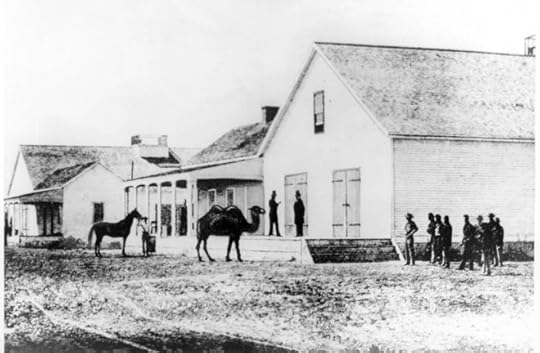
Billy the Kid wasn’t left-handed.
A famous tintype photograph of Billy the Kid shows him with a gun belt on his left side. For years, the portrait fueled assumptions that the outlaw, born William Bonney, was left-handed. However, most tintype cameras produced a negative image that appeared positive once it was developed, meaning the result was the reverse of reality. There’s another reason we know Billy the Kid was thus a right handed. His Winchester Model 1873 lever-action rifle--Winchester only made 1873s that load on the right.
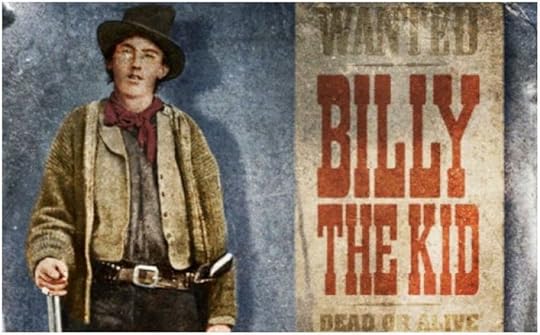
The famed gunfight at the O.K. Corral wasn’t much of a shootout and didn’t take place at the O.K. Corral.
One of the most famous gunfights in history—the shootout between the three Earp brothers (Morgan, Virgil and Wyatt), Doc Holliday, Billy Claireborne, the two Clanton brothers (Billy and Ike) and the two McLaury brothers (Frank and Tom)—didn’t amount to time-frame often depicted on the Silver Screen. Despite the involvement of eight people, the gunfight only lasted about 30 seconds. Furthermore, the shootout didn’t take place within the O.K. Corral at all. Instead, all the shooting occurred near the current intersection of Third Street and Fremont Street in Tombstone, Arizona, which is behind the corral itself. (I have visited the area. Tombstone is brutally hot in the summer. The incest large. ) Bloodshed made up for the brevity. Three of the lawmen were injured and three of the cowboys killed.
The Long Branch Saloon of “Gunsmoke” fame really did exist in Dodge City
Anyone who watched the television show “Gunsmoke” is well acquainted with Miss Kitty’s Long Branch Saloon of Dodge City, Kansas. What viewers may not have realized is that the Long Branch really did exist. No one knows exactly what year it was established, but the original saloon burned down in the great Front Street fire of 1885. The saloon was later resurrected and now serves as a tourist attraction featuring a reproduction bar with live entertainment. According to the Boot Hill Museum, the original Long Branch Saloon served milk, tea, lemonade, sarsaparilla, alcohol and beer.
What did Cowboy really eat?
Cowboy food used a limited number of ingredients, partly because imported foods were expensive and partly because they needed food that kept well on the cattle trail. Coffee was an essential part of breakfast, which was large and high in fats and protein. Lunch was commonly beans, and dinner generally included something sweet like vinegar pie or apple dumplings. Because a large percentage of cowboys were of Mexican origin, spices and flavorings of that cuisine were popular.
Cowboys loved "mountain oysters," sliced and fried calf testicles. These were harvested in the spring when preadolescence bulls were castrated so they would be steers. (Served with horseradish sauce and are very tasty).
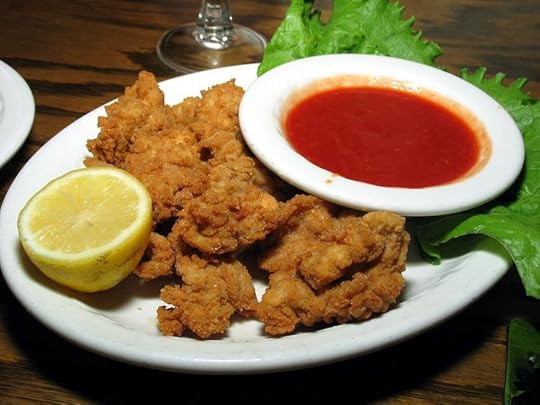
Thanks for stopping by,
Connie Vines

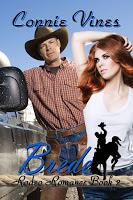
Watch Connie Vines' Book Trailers on YouTube!
Connie's Amazon.com Author Page!
May 10, 2016
My Cooking Journey by Ginger #prepackaged dinners
 google.com/imagesI'm really good at minimizing the time I spend in the kitchen. I prefer to consider my husband the chef, because, quite frankly, I suck at cooking. Can you believe it's already almost June 1st? I certainly don't want be lax in my wifely duties...already lacking in most, so I'm turning my thoughts to plans for the holiday.
google.com/imagesI'm really good at minimizing the time I spend in the kitchen. I prefer to consider my husband the chef, because, quite frankly, I suck at cooking. Can you believe it's already almost June 1st? I certainly don't want be lax in my wifely duties...already lacking in most, so I'm turning my thoughts to plans for the holiday.Thanksgiving always presents a problem, ever since I prepared my first…and last turkey and failed to remove the bag of giblets and neck so neatly hidden inside. Shouldn’t the packaging holding the bird come with a big notice or roadmap of where to find these things? And what a horrid death. It's bad enough to have someone chop of your head, but then to cram your neck up your butt?????
I’ve managed to get through a few holiday meals, but I’ve relied on Butterball’s self-basting turkeys or those great hams that come already cooked and spiral-sliced with an easy-prepare packet of glaze I can understand. Of course, my hams never look like the picture because I don't decorate my food.
To say my family grew up on take-out is not a lie, and it pains me that I’ve never owned an apron. Well, pained might be an overstatement. Maybe embarrassed is a better word. J
It’s really sad when you submit a recipe for “how to boil water,” but I’ve done that recently and it’s really a foolproof method. I never want anyone to say, "she can't even boil water." I can, and I have a foolproof way of creating bubbles.
With Thanksgiving only a short time away, you’d think I’d be in a tizzy, but I’ve discovered the secret every woman needs to now—complete precooked, heat and serve meals of your choice direct from Kroger. If you don’t have a Kroger near you, rest assured other chains offer this same service. For a mere $39.99, on the Wednesday before the holiday, I’ll be picking up a turkey, stuffing, mashed potatoes, gravy, cranberry relish, green bean supreme, rolls and a pumpkin pie. The directions are simply, heat and serve, time required approximately 2 ½ to 3 hours. Oh, and I’ve of course by purchasing Cool Whip for the pie, I'll be prepared.
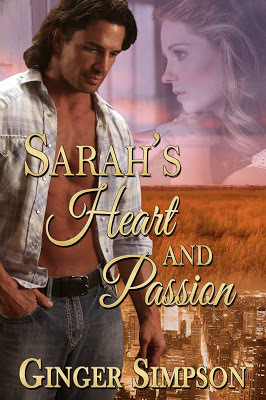 Thankfully, I write much better than I cook. Sarah’s Heart & Passion is much more interesting than mine. Here’s the blurb and cover so you can meet Sarah Collins and share a little of her story:
Thankfully, I write much better than I cook. Sarah’s Heart & Passion is much more interesting than mine. Here’s the blurb and cover so you can meet Sarah Collins and share a little of her story:When Sarah Collins set her sights on California for a new beginning, she never figured a war party would attack her wagon train. After her friend Molly succumbs to her injuries, Sarah is the sole survivor, left alone to find her way back to civilization. Stampeding buffalo, the black prairie nights and eerie noises,just when she believes she's faced the worst, a rattlesnake bite threatens to accomplish what the Indians failed. Is it her time to die, or does Sarah have a purpose yet to accomplish?
Here's an eating scene from the book. I could never cook anything in the wild, but luckily, Sarah's captor can.
EXCERPT:
Fire burned brightly within the circled stones, sparking higher with each drip of juice from the skewered fish suspended on two forked sticks. The enticing aroma made Sarah’s stomach grumble even more. Wolf crouched at the water’s edge, washing the blood from his knife, while Sarah mused over the powerful muscles encased in the sleeves of his fringed shirt. She hadn’t dared pay this much attention to him when he was practically naked. His long braids struck a familiar note… and the headband. Was it possible he was the same person she left unaided beneath the tree where she’d sought refuge? Her pondering ended when he stood and strode back to the fire.“These should be about done.” He indicated the nearly blackened fish. “I’m sorry I don’t have anything to put them on, or utensils. You’ll have to resort to using your fingers if you really want to eat.”“No matter, as hungry as I am, I could gnaw bark off a tree.” “I think the fish will be a little easier to manage.” He laughed, sheathing his knife in a beaded pouch tied just below his hip. The firelight dancing in his hazel eye made Sarah’s stomach flutter again, only this time she suspected it had nothing to do with hunger. This was her first time being alone with a man, and he was definitely a fine looking one. A million questions twirled through her mind, but right now, she wanted to eat. He might not feed her if he realized she’d left him for dead.Wolf handed her the fish, wood skewer and all, and she gingerly nipped at it, daring not burn her lips. Recalling what her mother did when her oatmeal was too hot, Sarah blew to cool the crispy skin then gnawed into the meat. Juice dripped from her chin, and she wiped the wetness on the back of her hand and took another bite, taking care to watch for tiny bones. She paused between swallows. “This is delicious. My stomach thought my throat was cut.” As soon as the words left her mouth, she sobered, recalling how close she came to actually dying in that manner. She flashed a half grin at Wolf. “That saying was something my father always used when hungry.” A noisy sigh whooshed past her lips. “I don’t find it quite so funny anymore.”Wolf nodded. “I understand why the humor has faded, but you’re safe here.” He took another bite of fish. His black hair glistened in the firelight, and his high cheekbones became more prominent as he chewed. Caught in a shroud of doubt, Sarah worried. As nice as he seemed, Wolf was still part Indian. Could she really trust him? He finished his fish before she’d gotten through half of hers, put another piece of wood on the fire, and then using a large boulder as a backrest, he leaned against it, crossed his ankles and patted his stomach. “That was mighty tasty. Tell me Sarah…may I call you Sarah?”She nodded and kept munching on her fish feast.
You can see all my available books and stores at http://www.amazon.com/author/gingersimpson
P.S. Good news...the follow-up to Sarah's story is available now...Sarah's Hope.
May 9, 2016
Spring Time
 Eye of Hurricane Katrina Spring is in the air here in Indiana. That usually means warmer weather, rain showers, and sometimes, severe storms. As I’m writing this post, to schedule it for publication at a later date, I’ve been keeping a wary eye on our weather. For more than a week now, our local weather folks have been saying that Tuesday and Wednesday could be really ugly and nasty. I have a feeling it’s going to be really bad because even though we’re still 48 hours out from the projected bad weather and the sky is fairly clear with just a few, cottony-puffy clouds, my collie Snape is already restless and grumpy. (Yes, I have a collie named for the Harry Potter character.) As brave as the fictional character was is exactly how cowardly my Snape is when it comes to thunderstorms. He’s actually better at predicting bad weather than NOAA and I trust him more. Last summer, Snape was 100% accurate on bad storms and NOAA was only about 40% on target.
Eye of Hurricane Katrina Spring is in the air here in Indiana. That usually means warmer weather, rain showers, and sometimes, severe storms. As I’m writing this post, to schedule it for publication at a later date, I’ve been keeping a wary eye on our weather. For more than a week now, our local weather folks have been saying that Tuesday and Wednesday could be really ugly and nasty. I have a feeling it’s going to be really bad because even though we’re still 48 hours out from the projected bad weather and the sky is fairly clear with just a few, cottony-puffy clouds, my collie Snape is already restless and grumpy. (Yes, I have a collie named for the Harry Potter character.) As brave as the fictional character was is exactly how cowardly my Snape is when it comes to thunderstorms. He’s actually better at predicting bad weather than NOAA and I trust him more. Last summer, Snape was 100% accurate on bad storms and NOAA was only about 40% on target. Severe storms fascinate me. Scare me to death, but fascinate me. My son is always sending me links during hurricane season if a “big one” is going to make landfall with the question “Are we going to this one?” It’s on my bucket list to ride out a Cat 5 hurricane. Not on the coast (I’m not THAT stupid) but maybe an hour or so inland, well out of the flooding zone.
 Tornado in eastern WyomingAlso on my bucket list is to go storm chasing one spring. I have no intention of doing that on my own, armed only with a wi-fi hotspot and the weather forecasts. Too easy to make a mistake and end up in the bear cage and dead as happened to several scientists a couple of years ago when they were out researching tornados…but, I would love to go with a professional outfit that storm chases every spring. Even my son—yes, the one who wants to ride out a Cat 5 with me—thinks I’m crazy for wanting to do this, because as he’s pointed out, I’ve survived two tornados. The first one was a very tiny funnel cloud (wasn’t technically a tornado because it never touched down) which passed over our house, topped out a large, stately evergreen on the east side of our property and merrily made its not so destructive way to the north-east for about half a mile before it dissipated. The second tornado was while I was at the Collie Nationals in Tulsa, Oklahoma. My thought at the time when I read we were going to be in Tulsa in April was “We’re going to be in the heart of tornado alley at the height of tornado season. What could possibly go wrong?” That one passed over the building the dog show was being held in while most of us were huddled in the basement restrooms, trying to keep calm and avoid frightening the young children. (In case you’re wondering—yes, dog show people are crazy!)
Tornado in eastern WyomingAlso on my bucket list is to go storm chasing one spring. I have no intention of doing that on my own, armed only with a wi-fi hotspot and the weather forecasts. Too easy to make a mistake and end up in the bear cage and dead as happened to several scientists a couple of years ago when they were out researching tornados…but, I would love to go with a professional outfit that storm chases every spring. Even my son—yes, the one who wants to ride out a Cat 5 with me—thinks I’m crazy for wanting to do this, because as he’s pointed out, I’ve survived two tornados. The first one was a very tiny funnel cloud (wasn’t technically a tornado because it never touched down) which passed over our house, topped out a large, stately evergreen on the east side of our property and merrily made its not so destructive way to the north-east for about half a mile before it dissipated. The second tornado was while I was at the Collie Nationals in Tulsa, Oklahoma. My thought at the time when I read we were going to be in Tulsa in April was “We’re going to be in the heart of tornado alley at the height of tornado season. What could possibly go wrong?” That one passed over the building the dog show was being held in while most of us were huddled in the basement restrooms, trying to keep calm and avoid frightening the young children. (In case you’re wondering—yes, dog show people are crazy!)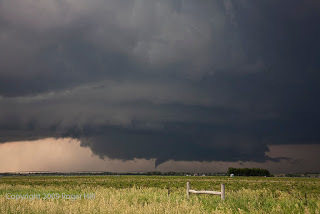 Tornado near Wheatland, WYPerhaps the reason I want to do these things is the power of “Mother Nature” helps me put things into perspective. We can rail all we want, scream about the weather—but we can’t change it. (For the record, I’m not a believer in manmade global warming/climate change. I don’t believe the science is settled. Any scientist worth his/her salt will state science is never settled. It’s an ever evolving process. Even the theory of relativity is still just a theory, though we’ve proven repeatedly that E does equal mc squared.) It’s that raw fury, that sizzle of lightning, the harsh crack of thunder, the strength of the wind which all remind me of Nature’s power. And, it is awesome and awe inspiring.
Tornado near Wheatland, WYPerhaps the reason I want to do these things is the power of “Mother Nature” helps me put things into perspective. We can rail all we want, scream about the weather—but we can’t change it. (For the record, I’m not a believer in manmade global warming/climate change. I don’t believe the science is settled. Any scientist worth his/her salt will state science is never settled. It’s an ever evolving process. Even the theory of relativity is still just a theory, though we’ve proven repeatedly that E does equal mc squared.) It’s that raw fury, that sizzle of lightning, the harsh crack of thunder, the strength of the wind which all remind me of Nature’s power. And, it is awesome and awe inspiring.May 7, 2016
Sunday Snips & Stuff by Ginger #Sundaysnips
 Happy Mother's day!!!!
Happy Mother's day!!!!This week I'm just cruising. I'm working on my next novel, Desperation's Bride when the mood strikes, but wanted to share the beautiful cover done by Charlene Raddon. I'm a visual person, so having a perfect cover inspires me. I guess you can guess this is a western historical about a mail order bride. *lol*
Here's a sneak peek of the cover and the contents:
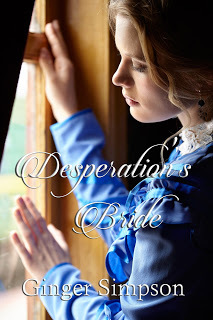 Char Raddon
Char RaddonHere'e the scene I wrote yesterday to coincide with the cover....see if you like it: (Remember this is the first unedited draft.)
Breakfast over, the children fed, outside playing, and the dishes washed by Clare, she followed Jason into his room. “The dresses are in this trunk. Don’t know why I saved a couple when I decided to put Mary’s wedding gown aside so Susanna might wear it one day…maybe because I like the color blue.” He opened the dusty lid.Clare spread up Justin’s bed while he fished through the contents. “I think Susanna will be happy to have a memory of her mother, even if she doesn’t wear her dress. You're very thoughtful.”Strange, Clare thought. She wasn’t bothered by the idea of wearing a dead woman’s clothes, let alone the deceased spouse of her intended.
Justin shook the creases from a beautiful long-sleeved, blue dress with lace at the collar and ruffles across the shoulders and down the front to the waist. “This was always a favorite of mine. You look to be the same size as Mary so I doubt there will be much to alter.” He laid the garment on the bed and unfolded a floral with blue cornflowers as the prominent pattern. “Here’s the only other one I kept. Mary liked to wear this warm weather because it’s made of light cotton and has shorter sleeves. She always wore…what are those things that make the skirt’s fuller?” “Crinolines?”
A WHILE LATER, I WROTE THIS TO ACCOMPANY IT:
While the children washed up at the kitchen pump, Clare slipped back into Benjamin’s bedroom, spread up the bed, and filled the bowl on the night table from the matching pitcher. She dipped a soft cloth into the water and washed her face, neck and other places not covered by clothing. After disrobing, she washed her armpits, ran a bush through her hair, fished in the armoire for her toilet water, and applied some sparingly. She wriggled into Mary’s blue gown, and smiled at the immediate fit. Clare spanned the waist of the luscious material with her hands and spun around, feeling like she danced on a cloud.
Visions of walking down the aisle to meet her groom flashed in her head and she walked to the window to make sure she hadn't imagined her new home. Fingering the real glass in the window, she appreciated how smooth and wonderful the panes felt given the fact that Linus’ windows only had shutters to ward off the cold air and protect from the weather. A thought donned. Her groom waited, so she cut her musing short, perched onto the side of Benjamin's neatly made bed, pulled on her worn-out shoes, and quickly laced them. Was this really happening? Was she going to marry the man that dreams were made of? Her cheeks hurt from smiling, and when she stood, she gazed down at the dress, deciding the small earrings she’d brought with her…one’s that Ma had given her, would be the perfect touch. She found them in a small box at the armoire's bottom and clipped them on. Pleased with her appearance, she swept out the door and went to meet her new family outside.
Check for this release of this one, hopefully by the end of the year. In the meantime...hop on over to the following blogs and check them out:
http://connievines.blogspot.com (Connie Vines)
http://yesterrdayrevisitedhere.blogspot.com/ (Juliet Waldron)
http://triciamg.blogspot.com (Tricia McGill)
May 6, 2016
Heather Greenis is back.
No question, I dream in colour. Very colourful and very realistic. Over the years I have woken questioning how much of my dream was factual and how much was my imagination. It’s a trait I gave my character Keeghan in The Natasha Saga. We both wake in the morning and have discussions with our husbands.
I remember one day being thrilled we had the pileated woodpecker at the suet that hangs with the other bird feeder. It was the male bird given the fact that flaming red crest went down to his beak. This is the guy that the cartoon was based on. Crow sized, at 40-49 cm, 16-19 ½ inches for my American friends, he warrants the respect of other birds and the salutation Mr. According to ‘Birds of North America’, there are 17 varieties of woodpeckers. No question, Mr Pil is the bird in charge. The others stand at attention and move over when that giant shows up.
That thrill turned into a thriller in my dream. I can still picture that scene in my mind. That beautiful, historic looking bird was huge. A 6+ foot creature with midnight black, evil eyes with creepy yellow pupils. Razor sharp claws appeared from under his massive muscular wings that could rip me apart milliseconds. The beast stood at our patio door, banging his rounded beak against the glass. The entire house rattled like we were in the middle of an earthquake. That bugger was determined to get into our home. He wasn’t looking for more suet. Nope. That beast wanted to devour me. In one big gulp. Trapped within my own home, with nowhere to run…
I woke up with my heart pulsating into my throat, wide eyed and pushed myself to a sitting position. Dreams always end so abruptly.“What’s wrong?” my husband asked.I couldn’t speak. I couldn’t move. Hubby rubbed my back. “It was just a dream. Go back to sleep.”Just try to get back to sleep after that one. We had quite the chat the following morning about that dream.
Someday, I will figure out how to write that dream into a plot. The question is, a suspense or a comedy. I could certainly flip it into something silly. Who as ever heard of a 6 foot woodpecker? Hmmm. Add it to the list of the other plots stirring around in my crazy noodle, begging to escape. No worries. I will give my story a proper ending.
Where can you find me you’re asking. We-ell, allow me to point you in the right direction…
http://hgreenis0.wix.com/heather-greenis
follow me on https://www.facebook.com/Heather-Greenis-1056075634413221/?ref=hl
and https://twitter.com/heathergreenis?ref_src=twsrc%5Egoogle%7Ctwcamp%5Eserp%7Ctwgr%5Eauthor
Find my books, currently on sale atamazon- http://www.amazon.com/s/ref=nb_sb_noss?url=search-alias%3Daps&field-keywords=heather+greenis
May 4, 2016
Cowboy Lingo by Connie Vines
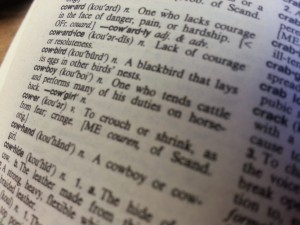 When it comes to vocabulary, you could say the cowboy tends to have a rather colorful one. However, I've listed a few words he has retired (or perhaps never used much in the first place).
When it comes to vocabulary, you could say the cowboy tends to have a rather colorful one. However, I've listed a few words he has retired (or perhaps never used much in the first place).
1. Lasso:
This is a word that was used in the early days of cattle ranching, but fell out of favor fairly early on. Unlike many cowboy words that originated from Spanish descent, this one came from the Portuguese word, “laco,” meaning “to snare.” With the exception of a few California stockmen who continued to use it, the word “lasso” was replaced with “rope” within a few short years of its introduction around the late 1800s to early 1900s. This fact makes the popularity of “lasso” among city slickers, especially journalists, in this day and age even more baffling. Bottom line, a rope is a rope. Acceptable variations include “lariat,” “lass rope” and “twine,” but never “lasso.”
2. Bucking Bronco:
Another word that originated in the late 1800’s was “bronco,” derived from the Spanish word “potro bronco” meaning “untamed colt.” The “o” was quickly dropped and “bronc” is the word still used today. If you go to a rodeo, you will see two “bronc” riding events, bareback bronc riding and saddle bronc riding. However, if you hear just “bronc riding,” this is normally a reference to “saddle bronc riding,” whereas bareback bronc riding is simply known as “bareback riding.” Likewise, saddle bronc riders are referred to as “bronc riders” and bareback riders are known as such. Just forget “bucking,”drop the “o” from bronco.
3. Chaps:
This one is a little confusing. Most cowboy newbies pronounce the word “ch-aps” like “chapstick.” This is improper pronunciation of the word. It is actually pronounced “sh-aps.” As in, “Chantilly”. And the short, knee or shin length chaps cowboys wear? Well, those are called “chinks,” pronounced exactly like you think it would be.
4. Cowboy Up:
Cowboys aren’t really much for following the crowd. If they were, they would be far less mysterious and cool. So, you may still hear this phrase tossed around occasionally, but likely more as a catchy story headline than a jolt of encouragement behind the bucking chutes.
5. Giddy-Up:
I looked this up in Webster’s online dictionary and it is actually a word, spelled giddyap. Meaning: to go ahead or go faster. Now, I have been around cowboys my whole entire life and I have never (not once) heard a cowboy say “giddy-up.” Although I am not sure what the precise origin of the word is, I have heard speculation that it may come from the draft horse driving command “gee up,” which means “go faster.” The only person I recall ever using is a parent sitting a toddler on a rocking horse.
For more cowboy speak, catch Pro-Rodeo interviews on ESPN.
Or, download one of my Rodeo Romance novels!

May 3, 2016
Vision Quests????
 comingofagebetweenojibweandusa.blogspot.comI have the good fortune of being part of a western blog that's also got a new FB group, and I love doing research. This is what I learned about the Lakota people. I'm recycling blogs.
comingofagebetweenojibweandusa.blogspot.comI have the good fortune of being part of a western blog that's also got a new FB group, and I love doing research. This is what I learned about the Lakota people. I'm recycling blogs.I've always been the kind of mother who worried if my child wasn't home the moment I expected them. Rather than chalk the tardiness off to just being late, I pictured them kidnapped, dead in a ditch, the most horrible scenarios one could imagine. I've always been that way, so I can't imagine being an Indian mother and sending my son off on a vision quest.
What is a vision quest you ask? In most tribes this trek into the wilderness to bond with nature and commune with spirits was a young brave's initiation into manhood. Clad only in a breechclout and moccasins, the lad is banished to a lonely existence in a vision pit where he'll stay for four days and nights without food. Whether the vision he receives is from delirium or truly a spiritual occurrence, we may never know, but to the Indian nation, a vision quest gave the budding brave an experience to see life through the eyes of his heart...to determine an image of himself as an adult. As in all rituals, preparation aided the participant for his journey, in this case, time spent in a sweat lodge purifying his mind and soul.
Now I've raised another question. Sweat Lodge? Usually a small and beehive shaped structure of willow covered with buffalo skins in which stones heated outside were passed inside where water was poured on them to create a purifying steam. With the flap closed, occupants (all male) sat naked inside with the boy, chanting and praying, and claiming to hear spirit voices. Afterwards, the "steamed" men dried themselves with sage leaves and the boy left for his quest. A very similar ritual took place before each war party departed the village. Unlike a women's first menses, which was a once in a lifetime celebration, vision quests took place as frequently as a Lakota Brave needed spiritual help.
When a young brave returned from his quest, his visions were interrupted by a medicine man who gave him clues to his "adult" name and the animal that would henceforth be considered the lad's protector. For instance, a man might garner power from an elk, while another might have envisioned a bear during his quest. Each animal represented a particular skill or attribute such a bravery, healing, speed, etc.
The Lakota Sioux are a fascinating tribe, and I'm so happy to be able to share some of their legendary history with you.



